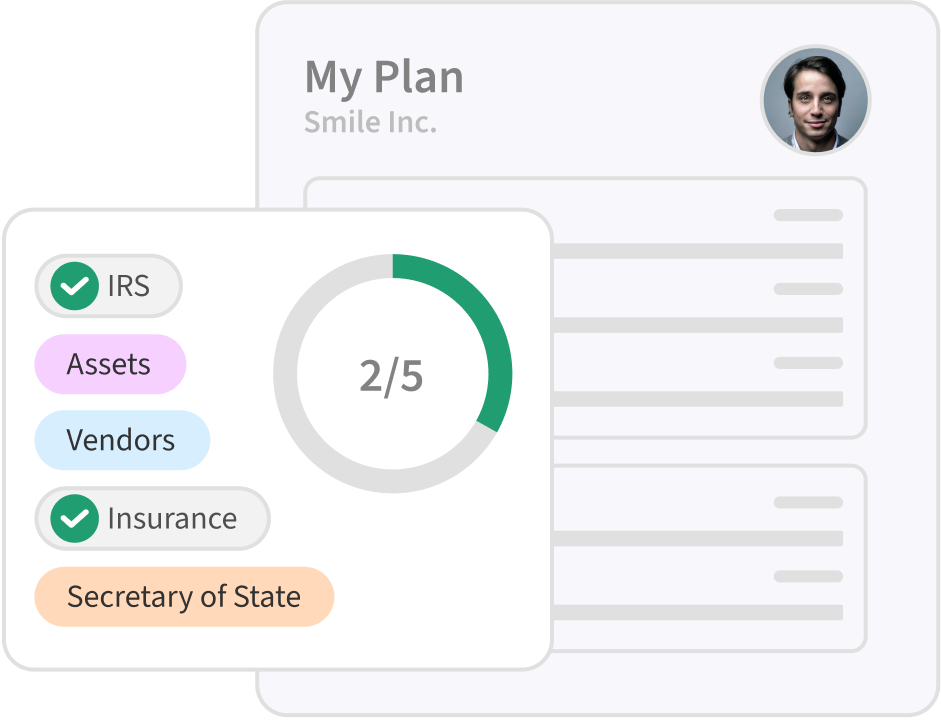Running out of money is one of the most stressful moments a startup founder can face. Cash is the lifeblood of any business, and when it’s dwindling, tough decisions need to be made quickly. Recognizing the warning signs early is critical to acting in time to protect your business and its stakeholders.
Here are some key signs your startup might be running out of money:
Missed Payroll or Vendor Payments: Falling behind on paying employees or suppliers is a red flag.
Declining Cash Balance: Watching your bank balance dip below a comfortable safety margin.
Difficulty Raising New Capital: Struggling to secure investor interest or meet funding goals.
Excessive Burn Rate: Spending more than you’re earning, with no immediate plans to scale back.
This post will explore the paths available when you’re on the brink - whether extending your runway, pursuing an acquisition, planning a structured wind-down, or considering bankruptcy. Each choice comes with unique challenges and opportunities, but acting decisively can make a significant difference in the outcome.
Understanding Your Financial Starting Point
Before you decide what path to take, it’s essential to fully understand your current financial situation. Gaining clarity on your financial position is the foundation for making the best decisions moving forward.
Calculate Your Runway: Start with your current cash position. Subtract fixed costs (e.g., payroll, rent, insurance) and account for variable expenses (e.g., advertising, fluctuating customer support costs). Don’t forget to reserve funds for taxes or legal obligations. Additionally, it’s wise to set aside a shutdown reserve fund to cover costs if the company needs to wind down operations. Use our shutdown calculator to determine how much to keep aside for this purpose.
Review Contracts and Obligations: Carefully examine all current agreements, including leases, service contracts, and purchase orders. Look for penalties or costs associated with early termination or renegotiation.
Assess Your Debt Situation: Create a detailed list of all loans, lines of credit, and outstanding invoices. Include key details like interest rates, due dates, and any personal guarantees signed by founders.
Compile a Comprehensive Financial Overview: Consolidate all the above information into a single document or dashboard. This organized view of your finances will help clarify your company’s reality and inform your next steps.
Once you have the above drafted, let’s see what the options are and find the best one.
Option 1: Extend Your Runway
Extending your runway is often the first path founders consider. It gives you more time to fix problems, secure additional funding, or build sustainable revenue. Here are the main ways to do it:
Cost-Cutting Measures
Staff reductions: Salaries are usually one of the biggest expenses. Reducing staff can free up cash, but it also means losing talent and expertise. Think carefully about who is critical to keep. For many CEOs, this is one of the hardest decisions to make, as it involves balancing financial necessity with the personal and professional impact on team members.
Office space: If you’re still paying high rent for a physical space, consider downsizing or going fully remote. Subleasing excess space might also ease the financial burden.
SaaS and service contracts: Audit your software subscriptions and services. Cancel or pause anything that isn’t essential to daily operations. Additionally, try to renegotiate with as many SaaS vendors as possible. Many of them would prefer to keep you as a customer and may offer discounts or flexible terms. Also, evaluate the number of seats you’re paying for—many companies pay for far more than they actually use.
Revenue Acceleration Options
Price increases: If the market can handle it, raising prices can bring in more cash quickly. However, watch for pushback from customers or churn.
Collection speed-up: Tighten your invoicing and follow-up processes to get paid faster. Offer small discounts for early payment, or use automated reminders.
Prepayment incentives: If you have loyal customers, offer them a discount in exchange for paying upfront. This can provide immediate cash flow.
Bridge Financing Possibilities
Existing investors: Your current investors may be open to a quick infusion of cash if they still believe in your vision. This can come in the form of additional equity or other funding arrangements.
Convertible notes: Convertible notes let investors loan you money now that can convert into equity in the next funding round. This can buy you time without setting a new valuation right away.
Revenue-based financing: If you have consistent revenue, some lenders offer a cash advance in return for a percentage of monthly revenue. This avoids giving up more equity, but can be expensive if revenue is uneven.
Here's our detailed guide on how to handle investor communications.
Option 2: Find a Buyer
If cutting costs or raising additional cash won’t solve the crisis quickly enough, selling the company might be your best option.
Types of Possible Exits
A strategic acquisition can be one of the most effective options. This approach involves another company purchasing yours to gain access to your technology, customer base, or expertise. While this often provides a clean and lucrative exit, it demands careful planning and negotiation to ensure the best possible outcome.
Alternatively, an asset sale involves selling specific elements of your business, such as software, hardware, or patents. Although this may yield less financial return compared to a full acquisition, it is usually faster to execute.
Finally, an acquihire focuses on transferring your team to a larger company. While this ensures employees secure new roles, the financial gains for founders and investors might be limited, especially if the product itself is not a major draw.
Quick Assessment of Selling Points
Technology: Highlight whether your product or technology is unique and innovative enough to stand out. Demonstrate its potential to disrupt the market and emphasize any intellectual property that sets it apart from competitors.
Customer base: Showcase the strength and appeal of your customer base. If your users fall into desirable demographics or niche markets, underscore the value they bring and their potential loyalty to a buyer.
Team expertise: Detail the caliber of your team, emphasizing their skills, industry knowledge, and ability to innovate. A highly skilled team can be a compelling asset for potential buyers, particularly if their expertise aligns with strategic goals.
Timeline Realities
Finding a buyer can take weeks or months. Buyers will conduct due diligence before signing a deal. If you’re truly running out of cash, you need to start the process as soon as possible or consider other ways to stay afloat during negotiations.
Option 3: Structured Wind Down
If you can’t find a buyer or can’t keep the lights on, winding down might be the right path. A structured wind-down is a formal process of closing your company. It involves steps to ensure you meet legal obligations and protect the people involved.
Dissolution Process Overview
Dissolution is the legal process to close a company. Each state has its own rules about notifying creditors, settling debts, and disposing of assets. By following these procedures properly, founders and investors generally avoid personal liability for the company’s obligations.
Cash Preservation Tactics
Even while closing down, you should preserve as much cash as possible to pay final obligations. Avoid unnecessary spending and be ready to justify every expense to creditors and investors.
Employee Considerations
Employees have protections that become critical when shutting down, and as a founder, you must navigate these obligations carefully to avoid legal and ethical pitfalls.
WARN Act: Federal law mandates that some employers provide advance notice before significant layoffs. Additionally, many states have their own variations of this rule, which may impose stricter requirements. Neglecting these obligations could lead to costly penalties or lawsuits, so consult legal counsel to ensure compliance.
Priority of payments: In most cases, employees’ unpaid wages take precedence over other unsecured debts during a wind-down. Failing to honor these payments not only breaches labor laws but also risks damaging your reputation with employees and the broader business community.
Customer Transition Planning
If customers prepaid for your service, they might be entitled to refunds or transitions to another provider. For example, subscription-based businesses may need to reimburse customers for unused portions of their plans. Similarly, SaaS companies might need to assist clients in migrating their data to a competitor’s platform to avoid disruptions.
In regulated industries like healthcare or finance, there are often additional requirements for transferring records and data securely. For instance, healthcare providers must comply with HIPAA regulations to ensure that patient records are handed over in a legally compliant manner. Ignoring these obligations can lead to fines or legal actions, so it’s critical to plan for these scenarios carefully.
Asset Value Maximization
You can sell or auction assets like equipment, software, or intellectual property to raise funds. This might include selling office furniture, unused hardware, or licensing intellectual property to third parties. For instance, you might find value in auctioning off proprietary software that could benefit another company in your industry.
The goal is to maximize returns, enabling you to settle as many obligations as possible. As a pro tip, prioritize assets that have broad appeal or high market value to attract more bidders and generate faster cash flow. Engaging a professional auctioneer or broker can help ensure you receive fair market value and streamline the process.
Option 4: Bankruptcy
Bankruptcy is a formal, court-supervised process for dealing with overwhelming debt. While it can offer legal protections, it’s often expensive and lengthy.
When it Makes Sense
Bankruptcy might be the right path if you have significant assets and large creditors, as it provides a formal mechanism to manage overwhelming debt. However, it is less about saving the company and more about creating a fair process for deciding which creditors get paid first. Founders should be cautious, as this path can involve lengthy legal proceedings, high costs, and loss of control over decision-making. Many younger tech startups avoid bankruptcy because they often lack substantial physical assets or complex financial structures, making other options like restructuring or asset sales more practical.
Basic Process
In short, the bankruptcy process provides a structured, legal framework to address debt when a company can no longer meet its financial obligations. It involves court oversight to ensure fairness to all parties involved, including creditors, employees, and owners.
Chapter 7 (Liquidation): This type of bankruptcy is focused on selling off the company’s assets to repay creditors. The proceeds are distributed according to a priority system, beginning with secured creditors, then unsecured ones, and finally equity holders. Once the process is complete, the business ceases to exist.
Chapter 11 (Reorganization): This option allows a company to restructure its debts while continuing operations. Under court supervision, the business proposes a detailed repayment plan that must be approved by creditors and the court. If executed successfully, the company emerges from bankruptcy with a more sustainable financial structure and the opportunity to continue operating.
Cost and Timeline Overview
Bankruptcy can be expensive, sometimes taking months or years. Legal fees add up, and a court-appointed trustee might take control of the company’s assets. The more creditors and disputes you have, the more complicated and drawn out the process can become.
Impact on Stakeholders
Because the process is court-driven, there’s a lot of uncertainty. Judges and trustees make many decisions, which can leave employees, investors, and creditors in limbo for a long time. Communication can be tough, and relationships may be strained by legal battles for years.
Making Your Decision
Deciding which option is best often depends on how much time and cash you have left, and how quickly you can make effective decisions to stabilize your business.
30 Days of Cash: With just a month of cash remaining, time is of the essence. Drastic measures, such as deep cost cuts, emergency funding, or even a quick sale, may be unavoidable. This period requires swift action and prioritizing critical financial obligations to buy time.
60 Days of Cash: With a bit more breathing room, you can explore strategic options such as negotiating a bridge financing deal or pursuing a strategic sale. This window allows for slightly more flexibility, but you must act with a sense of urgency to secure a sustainable path forward.
90+ Days of Cash: With three months or more of runway, you have the opportunity to take a more calculated approach. You can calmly negotiate with investors, work on a restructuring plan, or build toward a long-term solution while maintaining operational stability.
In any case, analyze how each choice affects:
Employees: Will you be able to pay final wages and meet legal requirements?
Customers: Are there prepaid contracts that need refunds or transition plans?
Investors: What do they stand to lose or gain depending on your path?
Vendors: Which suppliers or partners will be left unpaid, and what are the consequences?
Your board of directors should be involved at every step. They have a fiduciary duty to act in the best interest of the shareholders while balancing obligations to creditors and employees.
Action Steps
1. Immediate Priorities
Verify your cash position.
Identify any urgent bills or outstanding paychecks.
Talk to your board and key advisors.
2. Communication Planning
Prepare clear messaging for employees, investors, customers, and vendors.
Address issues openly and honestly to maintain trust.
3. Professional Help
Consider hiring a lawyer experienced in corporate restructuring.
Work with an accountant or CFO to finalize financial statements.
If you’re exploring a sale, consult with investment bankers or M&A advisors.
For founders considering dissolution, specialized professionals, such as the SimpleClosure team, can guide you through the complex process, ensuring all obligations are met while protecting your reputation for future ventures.
Common Mistakes to Avoid
Managing the challenges of financial instability requires thoughtful and timely decisions, but certain pitfalls can significantly worsen outcomes. One of the most critical mistakes is waiting too long to act. Delaying difficult choices often leads to fewer options and more severe consequences. Acting swiftly when you first identify trouble is essential to retaining control and mitigating potential damage.
Another common issue is poor stakeholder communication. When employees, investors, and other key parties are left in the dark, fear, mistrust, and confusion can spread rapidly. Transparent and open dialogue helps to prevent misunderstandings and keeps morale intact, even during tough times.
Mismanaging remaining cash can exacerbate the challenges of winding down a business. Careless spending on nonessential services or attempting to sustain unsustainable operations can drain resources needed to settle critical obligations. Financial discipline in the final stages is crucial to preserving value.
Ignoring legal obligations can lead to severe consequences, including personal liability for founders. For example, failing to adhere to WARN Act requirements or neglecting to prioritize employee wages can result in fines or lawsuits. Engaging professionals ensures compliance and minimizes risks during this critical time.
Lastly, underestimating the complexity of dissolution is a mistake that can have long-term repercussions. Shutting down involves managing intricate legal, financial, and operational details. Mishandling customer contracts or asset distributions can damage your reputation and invite legal challenges. For founders facing these uncertainties, consulting with specialists can provide clarity and ensure a quick, smooth, and responsible process.
Get your free founder's guide to shutting down

A comprehensive breakdown of how founders can quickly and easily execute a fully compliant shutdown
Conclusion
Running out of money doesn’t necessarily mean your startup’s story is over—though it may signal the need for a significant pivot or a graceful close. By carefully reviewing your financial situation, exploring all options, and making clear, decisive choices, you can minimize the impact on employees, investors, and customers.
In many cases, an aided dissolution may be the most strategic path forward. This approach involves professional guidance to navigate complex legal, financial, and operational challenges, ensuring compliance and protecting your reputation. Addressing uncertainties early is key to maintaining control and avoiding potential pitfalls.
If you’re unsure of the best way to proceed, let’s talk. A simple, no-obligation conversation can provide clarity and set the groundwork for a responsible and effective resolution.


